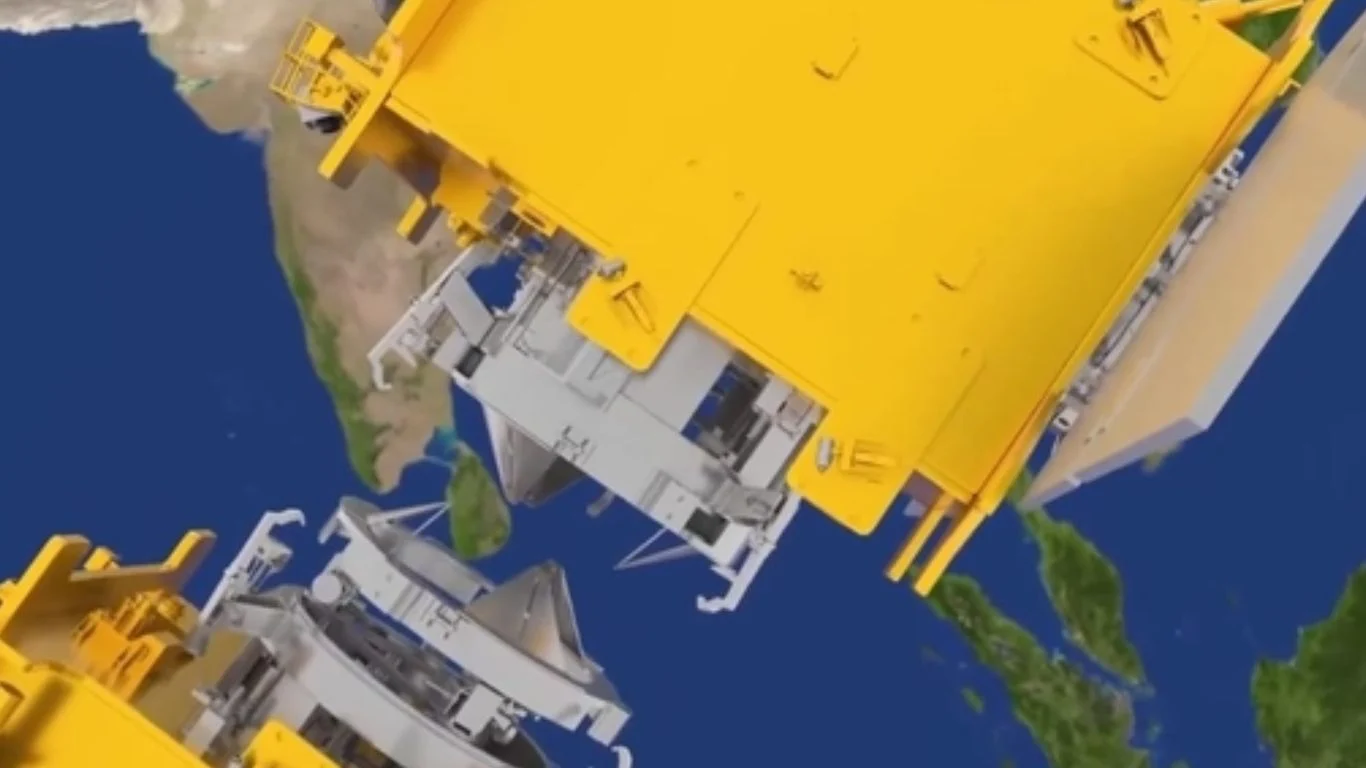
ISRO’s SpaDeX Mission Achieves Major Milestone with Second Successful Satellite Docking
In a significant leap for India’s space capabilities, the Indian Space Research Organisation (ISRO) has completed the second successful docking of satellites under its Space Docking Experiment (SpaDeX) mission. The announcement was made by Union Minister Jitendra Singh via an X (formerly Twitter) post, noting the milestone as another step forward in India’s growing space ambitions. This comes as part of a larger initiative to develop in-orbit servicing capabilities, a key technology required for future space missions, including manned expeditions and the construction of space stations.
The SpaDeX mission was launched on December 30, 2024, aboard the PSLV-C60 rocket. The payload consisted of two experimental satellites, SDX01 and SDX02, designed to test complex maneuvers such as rendezvous, docking, and undocking in Earth orbit. These are considered some of the most advanced operations in orbital mechanics and are essential for long-duration missions, satellite servicing, and the development of modular space structures.
The Timeline of Achievements
Following the successful launch at the end of 2024, the SpaDeX satellites achieved their first docking on January 16, 2025, at 6:20 AM IST. This event marked a major breakthrough, as both satellites were able to autonomously navigate toward one another, align their docking interfaces, and connect physically while rotating as a single unit. The satellites remained docked in space for nearly two months, during which ISRO scientists closely monitored their performance, structural stability, and energy sharing mechanisms.
After extensive simulation and testing—including 120 trial runs on Earth using a sophisticated simulator—the SpaDeX satellites were successfully undocked on March 13, 2025, at 9:20 AM IST. The undocking occurred at an altitude of 460 kilometers in a circular orbit with a 45-degree inclination. This was carried out on the very first attempt, signaling ISRO’s growing precision and reliability in handling complex space maneuvers.
Post undocking, both satellites continued to orbit independently, with ISRO confirming that their health status remained normal. The agency noted that this marks the successful demonstration of all primary mission objectives: autonomous rendezvous, precision docking, and safe undocking.
The Second Docking: A New Phase
On April 21, 2025, ISRO confirmed that the SpaDeX mission had achieved a second successful docking, further validating the robustness and repeatability of its in-orbit docking technologies. Union Minister Jitendra Singh stated that the experiment builds on India’s aspirations to master technologies critical to space station construction and deep space exploration.
The second docking was not just a repetition of the earlier maneuver but a vital step in demonstrating the system’s reliability under slightly altered parameters. It tested ISRO’s ability to perform multiple docking cycles and further showcased its advancements in autonomous spacecraft navigation, real-time decision-making algorithms, and mechanical coupling systems in a microgravity environment.
Dr. V Narayanan, ISRO Chairman, emphasized the significance of this accomplishment in an interview. He detailed the extensive groundwork and simulations carried out before the undocking in March. “On January 16, we had a major achievement. We successfully docked both the satellites together, and they were rotating as a single body. Then came the challenge of undocking. For that, we carried out a lot of studies and analysis. We built a simulator and conducted 120 simulations to ensure there were no errors. On March 13, at 9:20 AM, we succeeded in the first attempt,” he said.
Setting the Stage for Human Spaceflight and Beyond
The SpaDeX mission is considered a precursor to India’s more ambitious human spaceflight program, Gaganyaan, and the proposed Bharatiya Antariksh Station (BAS)—India’s envisioned space station. Technologies tested and proven in this mission, such as autonomous orbital maneuvering and docking, are essential for the safe transfer of crew and cargo in space.
Dr. Narayanan further reflected on the importance of learning from every challenge, noting, “This is a very complex technology. We learn not just from our own setbacks but also from those of others in the global space community. Whatever setbacks are there, we are taking care of them. We are confident in the kind of effort we are putting in. The dedication of Indian scientists is something else altogether.”
He also addressed the long-term implications of mastering docking technologies, which enable ISRO to think beyond Earth orbit. Future lunar or interplanetary missions will likely rely on the ability to dock spacecraft either in Earth orbit or near celestial bodies like the Moon or Mars. The SpaDeX mission thus plays a foundational role in preparing India for such endeavors.
A Technology-Intensive Milestone
SpaDeX is not just about the act of docking; it embodies a convergence of multiple cutting-edge technologies. These include optical navigation using onboard sensors, precision thruster control for micro-movements, autonomous guidance and control software, fault detection and correction algorithms, and mechanical docking mechanisms that can handle high-precision tolerances.
The mission’s success proves India’s capacity to develop, test, and execute such advanced systems indigenously. In the context of global space exploration, only a handful of nations—the United States, Russia, and China—have consistently demonstrated reliable space docking and rendezvous capabilities. India’s entry into this elite group positions it as a serious contender in the global space technology arena.
International Relevance and Collaboration Potential
Beyond national achievements, the SpaDeX mission enhances India’s reputation as a viable partner in international space missions. Several global space agencies, including NASA and ESA, have already expressed interest in collaborative opportunities with ISRO. With docking and orbital rendezvous becoming standard requirements in joint missions—such as those involving the International Space Station or future lunar gateway projects—India’s success in this domain adds significant credibility.
Moreover, India’s relatively lower cost of space operations makes ISRO a desirable partner for other countries looking to share research platforms or conduct scientific experiments in orbit. With SpaDeX, ISRO has proven its technical maturity to support such collaborations.

















